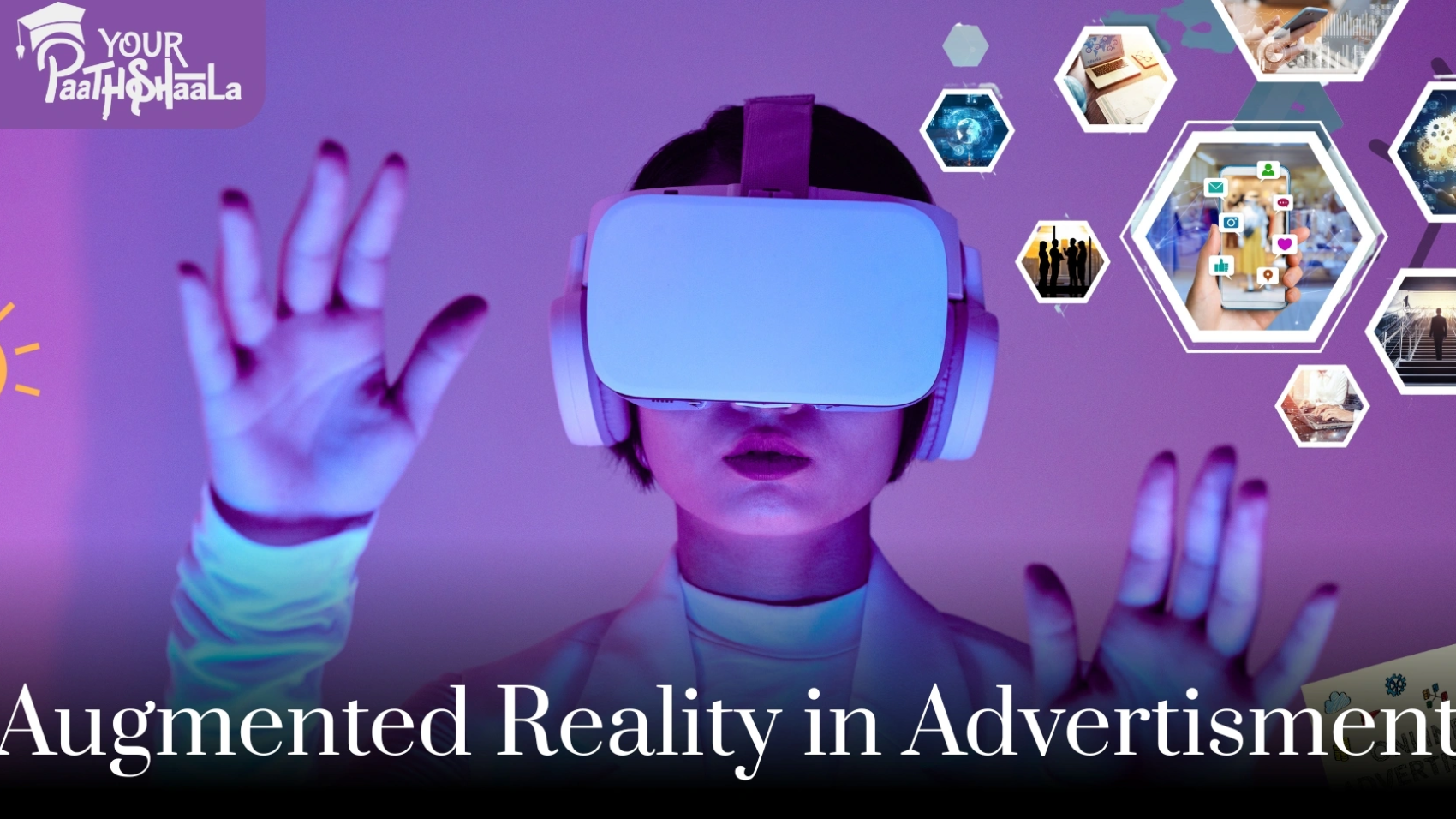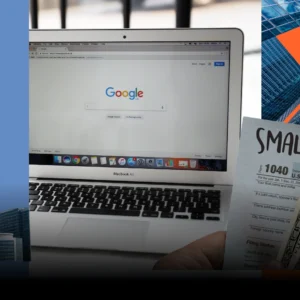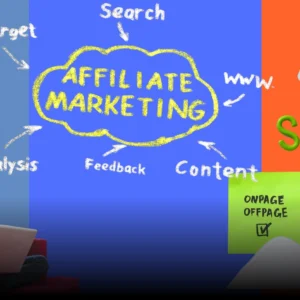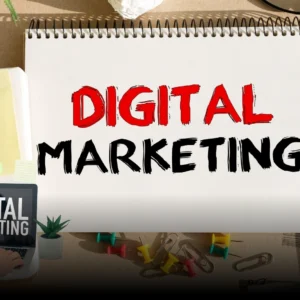Imagine walking past a billboard that springs to life: a virtual sneaker floats in front of you, or a 3D coffee cup steams, inviting you to scan a QR code for a coupon. This is augmented reality (AR), and in 2025, it’s reshaping digital advertising into an immersive, interactive, and unforgettable experiences. By blending digital content with the physical world, AR captivates audiences in ways traditional ads never could.
Digital advertising has evolved from static banners to video ads, but AR is the next big leap. With the global augmented reality advertising market projected to reach $8 billion by 2025, AR is no longer a novelty—it’s a must-have strategy for brands. This blog dives into how augmented reality advertising is transforming digital marketing, exploring its mechanics, real-world applications, challenges, and future trends. Whether you’re a marketer, small business owner, or curious consumer, here’s your guide to AR’s impact in 2025.
Word count target: ~2,000 words
Understanding Augmented Reality in Advertising
Augmented reality overlays digital elements—3D models, animations, or videos—onto the real world, viewed through smartphones, tablets, or AR glasses. Unlike virtual reality, which immerses users in a digital-only environment, AR enhances the physical world with interactive layers. Pointing your phone at a store display might reveal product details or a virtual try-on, making AR highly engaging.
In advertising, AR creates campaigns that turn passive viewers into active participants. Accessible via mobile apps, web platforms, or QR codes, AR leverages the ubiquity of smartphones. In 2025, advancements in AI, 5G, and mobile hardware deliver seamless, hyper-realistic AR experiences. The result? Campaigns that grab attention and drive results.
Why does augmented reality advertising matter? Traditional ads struggle against ad blockers, skipped videos, and audience overload. AR breaks through with 70% higher engagement rates, holding attention for up to 75 seconds compared to 1.3 seconds for standard ads. AR campaigns also boast 75% better recall and 94% higher conversion rates, making them a powerful tool for brands. AI-driven personalization further enhances relevance, tailoring experiences to individual preferences.
Example: In 2014, Pepsi Max used AR at a London bus shelter to project aliens and tigers, creating a viral hit. By 2025, such campaigns integrate real-time data, letting users interact with dynamic content, like customizing a virtual product.
Transforming Digital Advertising with AR
Augmented reality advertising redefines how brands connect with audiences across formats and industries. Here’s how it’s making waves in 2025:
Interactive Campaigns
AR turns static ads into dynamic experiences. Billboards, print ads, and social posts become gateways to immersive worlds. Entertainment brands use AR billboards to let users scan movie posters for trailers or ticket purchases, achieving five times the engagement of traditional displays. Print ads, like magazine spreads or product packaging, come alive with QR codes launching 3D models or games. Arla’s 2022 milk carton campaign, which turned packaging into recycling games, is now a standard tactic in 2025.
Case Study: Warner Bros.’ “Barbie” movie campaign featured a Snapchat “Barbie Lens,” letting users try on outfits from the film. Used 224 million times in a day, it showed AR’s viral power.
Virtual Try-Ons and Product Visualization
AR eliminates online shopping uncertainty by letting consumers “try” products virtually. In beauty, Sephora and L’Oréal’s AR apps enable makeup try-ons, with 61% of consumers trusting brands more when AR is offered. Fashion brands leverage Snapchat’s AR lenses for clothing try-ons, cutting return rates and boosting purchase intent by 40%. In home decor, IKEA’s Place app visualizes furniture in users’ spaces, now enhanced by 2025’s advanced spatial mapping for near-photorealistic results.
Stat: Meta reports AR campaigns combining traditional and AR tactics achieve three times the brand lift at 59% lower costs.
Gamification and Storytelling
AR ads often gamify engagement, making interactions fun and memorable. KFC’s AR menus let customers scan QR codes to “build” meals in a game, increasing store dwell time. Storytelling campaigns, like The Weeknd’s 2021 TikTok AR concert where users shaped the narrative, use AI in 2025 to personalize stories based on preferences. Niantic’s Pokémon GO-inspired AR games power brand scavenger hunts, drawing customers to physical stores with virtual rewards.
Social Media Integration
Social platforms like Snapchat, Instagram, and Meta are AR advertising hubs in 2025. AR filters drive organic sharing, amplifying reach. L’Oréal’s Instagram makeup try-on filters are shared widely, creating free exposure. Meta’s shoppable AR ads let users try products and buy within the app, streamlining purchases. Brands encourage user-generated content, like Taco Bell’s AR selfie filter, used millions of times, to build social proof.
Stat: Global AR ad revenue is projected to hit $6.68 billion in 2025, up from $1.36 billion in 2020, with social media as a key driver.
In-Store and Out-of-Home Enhancements
AR bridges physical and digital spaces. In stores, smart labels or QR codes launch product demos, like Sephora’s AR kiosks for makeup trials or retailers’ AR navigation tools. Out-of-home (OOH) advertising, like AR billboards or murals, transforms urban spaces. BrandXR’s AR murals let users scan walls for animations, increasing engagement from seconds to minutes.
Example: MobiDev’s AR router setup app, showing 3D instructions, inspires retail AR demos for complex products.
Technologies Driving AR Advertising
Several technologies fuel AR’s rise in 2025:
- AI and Machine Learning: AI personalizes AR ads, recommending products based on behavior. Dynamic Creative Optimization (DCO) adjusts visuals in real time.
- 5G Networks: Low-latency connections ensure smooth AR experiences in busy areas.
- Mobile Hardware: Advanced smartphone cameras and processors make AR accessible. Apple’s Vision Pro and affordable AR glasses expand possibilities.
- Markerless AR: Using GPS or accelerometers, markerless AR projects content without QR codes, offering flexibility.
Stat: The AR software segment, including ad platforms, holds 55% of the market and grows fastest in 2025.
Challenges and Solutions
Augmented reality advertising faces obstacles, but solutions are emerging:
- Accessibility: AR requires compatible devices or apps, limiting some audiences. Web-based AR reduces app reliance, and cheaper hardware broadens access.
- Cost: AR campaigns can be pricey to develop. Platforms like Snapchat’s Spark AR Studio simplify creation, and costs are falling.
- Privacy: AR collects data like location or camera access. Transparent consent and zero-party data (e.g., user-shared preferences) build trust.
- Ad Fatigue: Overused AR could bore audiences. Meaningful experiences, like product trials or stories, keep engagement high.
Future Trends in AR Advertising
AR advertising will evolve beyond 2025:
- Metaverse Integration: Brands like Nike craft AR experiences in virtual worlds like Roblox, blending ads with immersive spaces.
- Smart Glasses Surge: Apple’s Vision Pro and Meta’s Orion glasses shift AR ads to wearables, enabling hands-free engagement.
- Hyper-Personalization: Generative AI creates tailored AR ads, like virtual showrooms matching user tastes.
- Sustainability: AR cuts physical ad waste, aligning with eco-conscious values.
- Cross-Channel Synergy: AR integrates with programmatic ads, video, and voice for seamless omnichannel campaigns.
Projection: The global AR market will surpass $100 billion by 2025, with advertising as a major driver.
Getting Started with AR Advertising
Ready to embrace augmented reality advertising? Here’s how:
- Start Simple: Create an AR filter on Snapchat or Instagram to test engagement.
- Partner Up: Collaborate with AR agencies like BrandXR or use Meta’s Spark AR Studio.
- Add Value: Offer practical AR, like try-ons or demos, to solve customer needs.
- Track Results: Monitor engagement time, clicks, and conversions with analytics.
- Boost Sharing: Design shareable AR to amplify organic reach.
Example: A small jewelry brand launches an Instagram AR filter for virtual ring try-ons, offering a discount for shared selfies, driving sales and buzz.
Conclusion
In 2025, augmented reality advertising is transforming digital marketing by making ads interactive, immersive, and impactful. From virtual try-ons to gamified billboards, AR turns campaigns into experiences that resonate. With 70% higher engagement, 94% better conversions, and a projected $8 billion market, AR is essential for brands aiming to cut through the noise. Challenges like cost and privacy persist, but solutions are maturing, and the future—smart glasses, metaverse ads, and AI personalization—promises more innovation.
Ready to dive into augmented reality advertising? Start small, measure impact, and scale boldly. What’s your AR vision for 2025? Share below and let’s spark ideas! Bestdigitalmarketingcourseinraipur will teach you all about it.








Get Blockchain Insurance globally!
Get professional insurance of global importance from an insurer in Chelyabinsk, Russia.
More than 50 types of non-criminal insurance. The price starts from $ 1.25 per month.
Once a month, a document is created that can be shown to the regulatory authorities. We’re taking over the negotiations.
We insure risks such as:
1. Arbitrary legislation
2. Arbitrariness of the Central Bank
3. Possible harm to other people
Accept crypto and gift card payment.
Link (own hosting): http://78.29.53.57/insurance/common/
http://78.29.53.57/insurance/common/
Link (own hosting): http://78.29.53.57/insurance/common/
Click it!